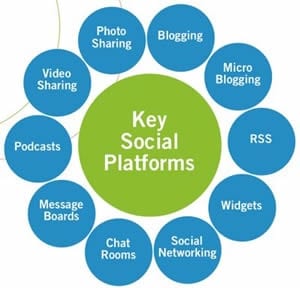By: Colin Crabtree
Social media networks make it possible to harness the ideas, information, knowledge, collaborations and passion of workers around innovation as never before, explains Colin Crabtree.
South African Author Eugéne Marias classic work by the same name delves into the fascinating life of the Termite or “white ant”, a common resident of the African landscape. He proposes that;
“We must consider a termitary as a single animal, whose organs have not yet been fused together as in a human being. Some of the termites form the mouth and digestive system; others take the place of weapons of defence like claws or horns; others form the generative organs.”
106 years later I am drawn to the similarities presented to us between the tenacious little ants, a typical company and the concept of social media in business and its uses in innovation frameworks.
As individuals in a company, our psyche collectively forms the soul of the company. Up until now it is this intangible “collective” that is the true culture of the company. Its essence has been largely ignored due to the inability to harness, analyze and understand it. Culture has traditionally been something described in mission and vision statements and disseminated to the staff as something to be subscribed to. This disconnect between desired behavior and actual behavior often hampers strategy execution in companies today.
We are now able to harness this “collective” energy – the soul of the company.
With the advent of social media and, more specifically, its importance as a business tool for the gathering, sharing and disseminating of information that was once intangible, we are now able to harness this “collective” energy – the soul of the company – in the form of information, knowledge, collaborations and passion. We can now leverage its value to the benefit of the company.
As with the termitary, the underlying value lies in this “collective,” in the shadow networks involving all the individuals, working in a cohesive manner oriented toward a single goal, the survival and growth of Marias’ so-called “single animal.”
Companies don’t need to encourage social media networks in the workplace. They are a given. As you read this, many of your employees and colleagues are actively involved in social media activity. The company’s task is to openly embrace it as a means to access the information, ideas, comments, relationships and creativity flowing in it, putting the positivity to good use and quickly addressing the negativity to ensure desired results and corporate goals are achieved. At the same time, important individual needs are addressed such as participation, belonging, purpose and recognition.
In the ants’ case they have a singular purpose, to keep the colony growing on a daily basis. In order to do this they operate as a single entity with passion and purpose with each individual knowing how, when and what their contribution means to the “collective.”
With social media platforms in place, innovation initiatives have a means to also harness the knowledge, relationships and creative ideas embedded in the shadow networks of a company through specific innovation campaigns that may define the participants, specifications and any other parameters that focus the campaign to produce the desired results. Individuals contributing feel a deeper sense of belonging and purpose and are rewarded through recognition and potentially remuneration.
Companies that fail to acknowledge the importance of social media in business and its ability to maximize the contribution individuals can make to the company’s day-to-day operations – or to further leverage these platforms for innovation to differentiate and grow the company – will fall behind in a world where competition is tough and time to market is paramount.
In light of this, is your company harnessing all the knowledge, creative and innovative value it can from its employees in order to maximize its growth potential and operate as a “single animal” with direction and purpose?
Colin Crabtree has been in the IT industry for over 30 years in various positions and is currently involved in a number of initiatives at Gijima to promote and support innovation in the workspace.

